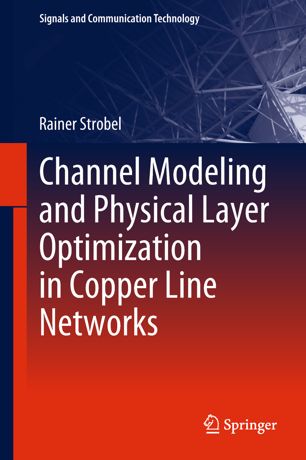

Most ebook files are in PDF format, so you can easily read them using various software such as Foxit Reader or directly on the Google Chrome browser.
Some ebook files are released by publishers in other formats such as .awz, .mobi, .epub, .fb2, etc. You may need to install specific software to read these formats on mobile/PC, such as Calibre.
Please read the tutorial at this link: https://ebookbell.com/faq
We offer FREE conversion to the popular formats you request; however, this may take some time. Therefore, right after payment, please email us, and we will try to provide the service as quickly as possible.
For some exceptional file formats or broken links (if any), please refrain from opening any disputes. Instead, email us first, and we will try to assist within a maximum of 6 hours.
EbookBell Team

4.1
80 reviewsThis book investigates the physical layer aspects of high-speed transmission on twisted-pair copper wires, where the most performance-critical components are multi-input multi-output (MIMO) precoding and multi-line spectrum optimization as well as optimized scheduling of the transmission time slots on the fiber to the distribution point (FTTdp) copper link. The book brings theoretical results into the implementation, which requires the introduction of realistic channel models and more practical implementation constraints as found in the copper access network.
A good understanding of the transmission medium, twisted-pair telephone cable bundles is the basis for this work. Starting from the analysis of measurement data from twisted-pair cable bundles at high frequencies, it presents a MIMO channel model for the FTTdp network, which allows the characteristic effects of high-frequency transmission on copper cable bundles in simulation to be reproduced and the physical layer transmission methods on the copper channels to be analyzed and optimize.
The book also presents precoding optimization for more general power constraints and implementation constraints. The maximization of data rate in a transmission system such as G.fast or VDSL is a combinatorial problem, as the rate is a discrete function of the number of modulated bits. Applying convex optimization methods to the problem offers an efficient and effective solution approach that is proven to operate close to the capacity of the FTTdp channel.
In addition to higher data rates, low power consumption is another important aspect of the FTTdp network, as it requires many access nodes that are supplied with power from the subscriber side over the twisted- pair copper wires. Discontinuous operation is a method of quickly adding and removing lines from the precoding group. To implement this, the system switches between different link configurations over time at a high frequency. The transmission times of all lines are jointly optimized with respect to the current rate requirements. Discontinuous operation is used to save power, but also makes it possible to further increase the data rates, taking the current subscriber traffic requirements into account. These methods are compared with theoretical upper bounds, using realistic channel models and conditions of a system implementation. The performance analysis provides deeper insights into implementation complexity trade-offs and the resulting gap to channel capacity.